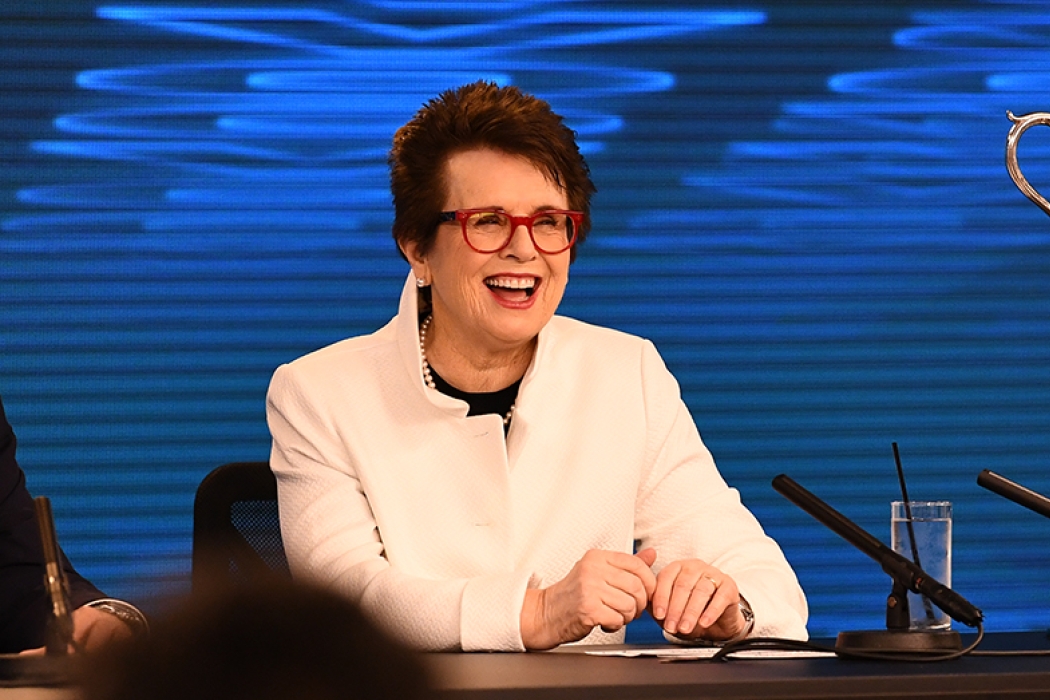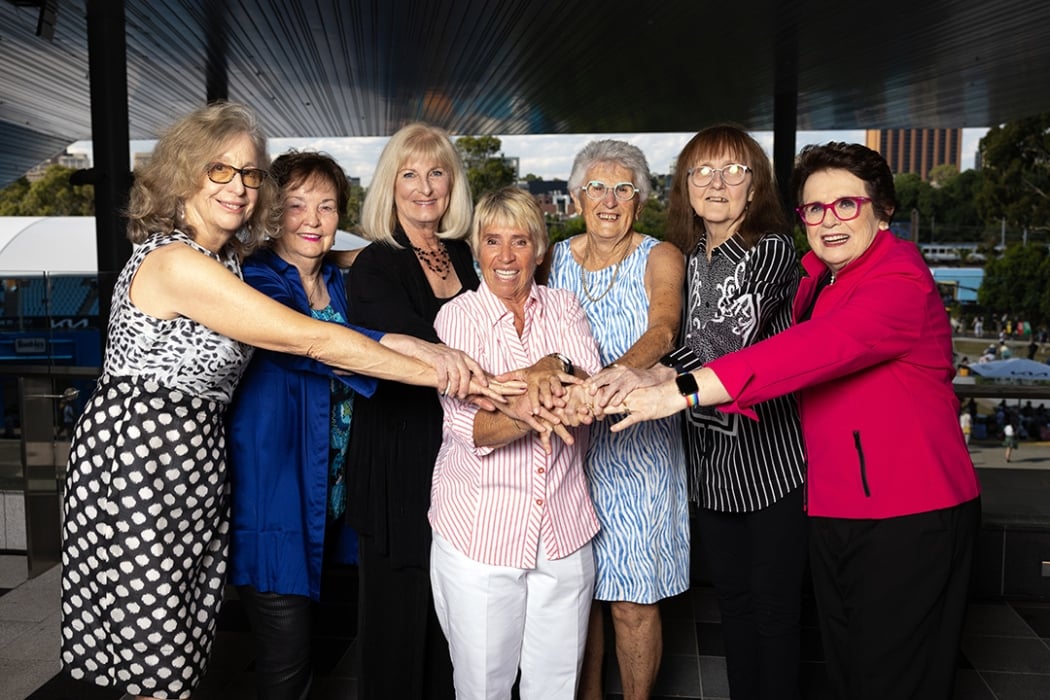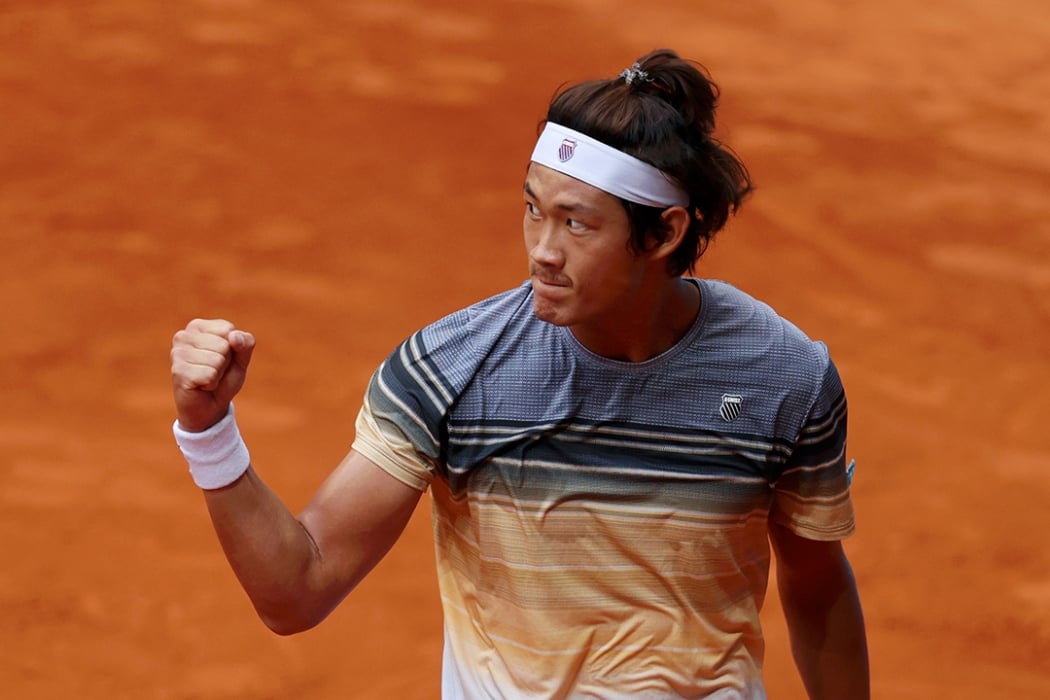The full version of this article first appeared in the June/July 2023 issue of Australian Tennis Magazine, one of the world’s longest-running tennis publications. For more in-depth features, news and analysis, you can subscribe now.
June 2023 marks 50 years since the formation of the Women’s Tennis Association. The Gloucester Hotel in London, on the eve of Wimbledon 1973, was the venue for the first coming together of women players under a single banner, rather than being divided by competing tours.
Although political point-scoring and tournament bans were not entirely relegated to the past, the WTA Tour thrived, almost from its inception, as a showcase for tennis as the richest, most global female sport. On the 50th anniversary of the WTA, a salute to 15 inspirational women (if only we had the space for 50!)
We celebrate five, in chronological order, in the first of this three-part series.
Billie Jean King
Three volumes of autobiography give a sense of the several tumultuous lifetimes Billie Jean King has packed into her 80 years. It’s like reading the life stories of three different people. In her riveting 2021 memoir All In, the grand dame of tennis unspools a cinematic, thrilling, difficult, exhausting, enriching life. So much of her personal story doubles as the history of women’s tennis.
The first female athlete to earn $100,000 in a season, conqueror of Bobby Riggs in the ballyhooed Battle of the Sexes, founder of the Women’s Tennis Association, King is the most consequential player in the history of women’s tennis. Her vision and toil created the professional women’s game, sometimes at cost to her own career.
So many of today’s mantras – ‘If you see it, you can be it’, ‘Be the change you want to see’, ‘Be your authentic self’, the embrace of inclusion and diversity – King personifies.
The rebel who took on the establishment became the establishment. In 2006, the USTA, which banned King in the 1970s, named its HQ for her – the Billie Jean King National Tennis Center. In 2009, she was the first female athlete to be awarded the Presidential Medal of Freedom; in 2020 the Fed Cup was renamed for her.
“It’s been a lovely, sometimes lonely, often soul-shaking, ultimately gratifying ride,” King writes at the end of All In.
Women’s tennis wouldn’t be what it is today without its ultimate off-court champion.
Gladys Heldman
That iconic picture of the Original Nine holding $1 notes? Those dollar-bill contracts were with Gladys Heldman, publisher of World Tennis magazine, mother of top-10 pro Julie Heldman, and organiser of the first standalone women’s pro event, in September 1970.
Heldman was the godmother of women’s pro tennis, but when asked who started the women’s tour, mockingly replied: “Jack Kramer”. The former champion and tournament promoter was so insulting in his treatment of women players – offering a pittance of the male purse at his Californian event – that the women pros, led by King and Heldman, felt they couldn’t do any worse going out on their own.
Defying lawsuits, threats and bans, Heldman recruited her friend, Phillip Morris chief Joe Cullman, to put up some of the $7500 prize money for the inaugural Virginia Slims Invitational of Houston. The rest is tennis history.
Chris Evert
The most influential role model in the women’s game, Evert’s country-club chic and cool, metronomic baseline game spawned a generation of double-handed teenage imitators.
None could match her grace under pressure or staying power – 18 Grand Slams, at least one major annually for a record 13 years (1974-86) and a winning career percentage of 90 per cent.
Evert’s auspicious arrival as a 16-year-old semifinalist at the 1971 US Open coincided with the dawn of the Open era, the US tennis boom and TV sports. The first computer-ranked No.1 and first female athlete on the cover of Sports Illustrated, Evert was the perfect telegenic champion to carry the fledgling women’s game in the 1970s, a symbol of success, wealth and glamour in an age of growing female independence.
Post-career, she reared three sons, raised over $25 million for philanthropic causes and founded the Evert Academy with brother John in her home state of Florida, inspiring and mentoring countless young players.
“More than anything, Chris is a star,” Billie Jean King once observed of her successor as No.1 and WTA President. “In fact, she’s the best star tennis ever had.”
Martina Navratilova
All-but unbeatable in her 1980s heyday, the blustery serve-volleyer swept six straight majors in 1983-84, dominated as No.1 in both singles and doubles (with Pam Shriver) and finished with a 43-37 record against Evert in sport’s most epic rivalry.
Navratilova’s 59 Grand Slam titles stretch from Roland Garros in 1974 to the US Open in 2006, a month before her 50th birthday. Owner of the entire Grand Slam collection, her nine Wimbledon singles trophies, 167 singles and 177 career doubles titles are all records.
Navratilova was dubbed the first bionic athlete; today we call it sport science. Her hard off-court training brought a heightened physicality to the game that is the norm today.
The champion’s resume parallels a movie-worthy life. Through sunshine and thunderous controversy, Navratilova emerged a gay icon, an inspiration for athletes behind the Iron Curtain, an immigrant personification of the American Dream, a fitness and aging guru, a novelist, two-time cancer survivor and an insightful and engaging commentator.
Steffi Graf
Dubbed Fraulein Forehand for the most devastating weapon in women’s tennis to that point, Graf’s 1988 Grand Slam saved the traditional calendar-year concept, the holy grail of tennis.
Unsuccessful campaigns by Bjorn Borg and Navratilova in the 1980s led to fears that the ultimate feat in tennis had become mission impossible, with talk of redefining the Grand Slam to a sweep of four majors, in any order. The 19-year-old shot-maker added her own modern twist, as the first Grand Slammer to win on three surfaces (her predecessors played three of the four majors on grass). And Graf upped the degree of difficulty by accessorising with Olympic gold – the first Golden
Grand Slam.

A thrilling athlete, with bounding footwork and raw speed, Graf pioneered the dominant style in tennis of the last 35 years. The aggressive baseliner, before Graf, was an oxymoron.
Never a lover of the limelight, the German departed the game in typically brisk style at age 30, as the reigning Roland Garros titleholder. To the delight of fans, her presence in the game was extended in her domestic guise as the wife of fellow No.1 Andre Agassi.
Serena Williams, Steffi Graf and Iga Swiatek are the cover stars of the June/July 2023 issue of Australian Tennis Magazine.



